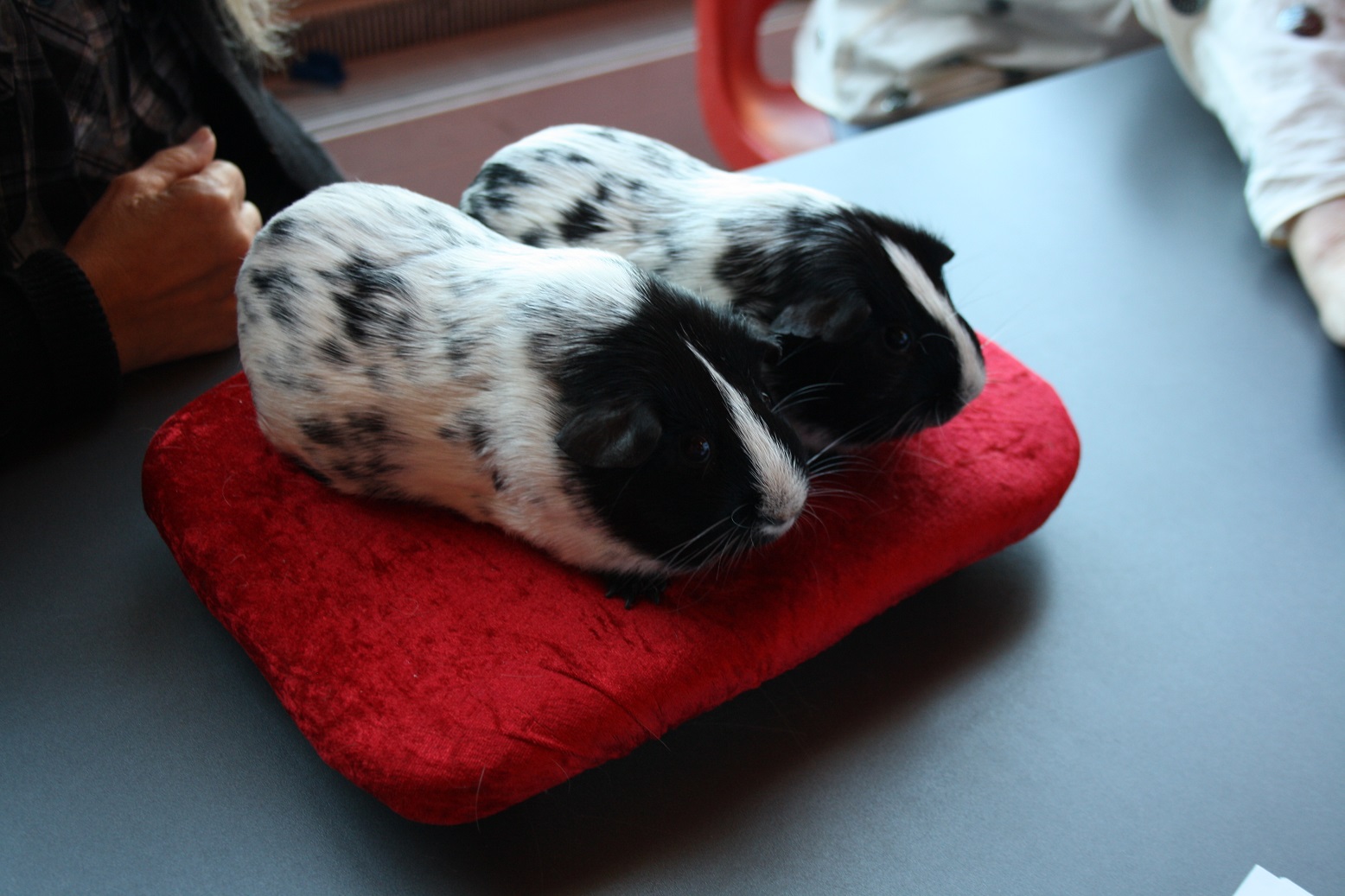
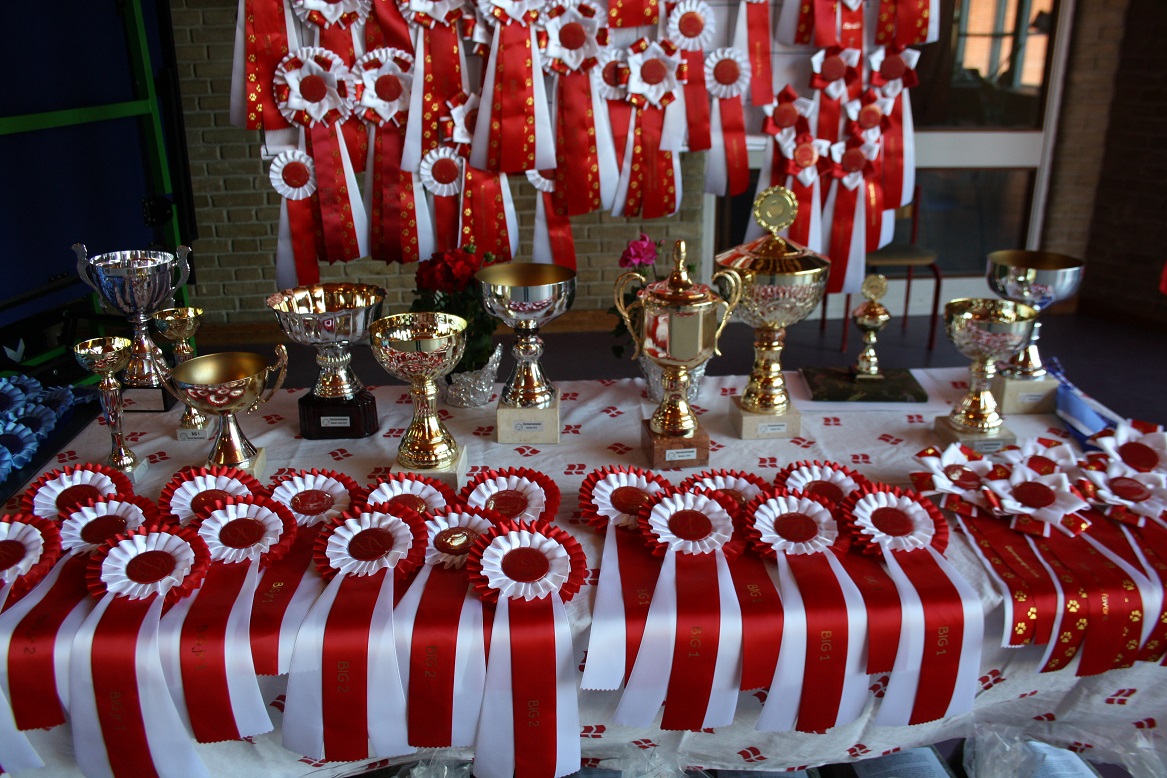

Last month, the Danish championships for guinea pigs were held in Copenhagen. The championships were hosted by Dansk Marsvineklub (The Danish Guinea Pig Association). The association’s purpose is to spread knowledge about the animals, and how to best care for and feed them and shows are held throughout the country where members meet up and exhibit their animals.
There were 3 main classes:
- Pure bred: Judged by the standard for each breed, for example whether the hair is properly coloured, if the eyes and ears are large and are placed correctly etc.
- Pets: All animals are welcome and emphasis is placed on the animal’s general condition, well-being and temperament. Denmark is known for the best pets throughout the Nordic region. We will return to this point…
- Juniors: A class for exhibitors under the age of 15. Same requirements as for the pets class, however, here emphasis is also placed on the interaction between children and animals and the child’s knowledge of the daily care
In addition, there are also some “for fun” competitions:
- Dress up competition
- Cucumber eating
- Weight competition
WINNER OF THE DRESS UP COMPETITION
The winner of the dress up competition was 5 month old Bluebells Teddiursa who was dressed as a dinosaur!
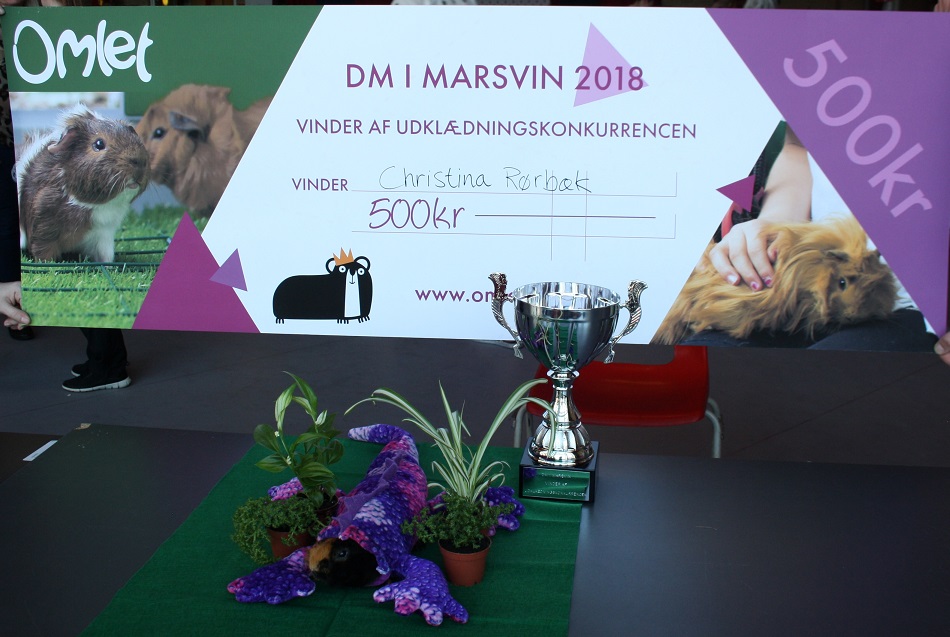

Here’s some of the other dress up entries!
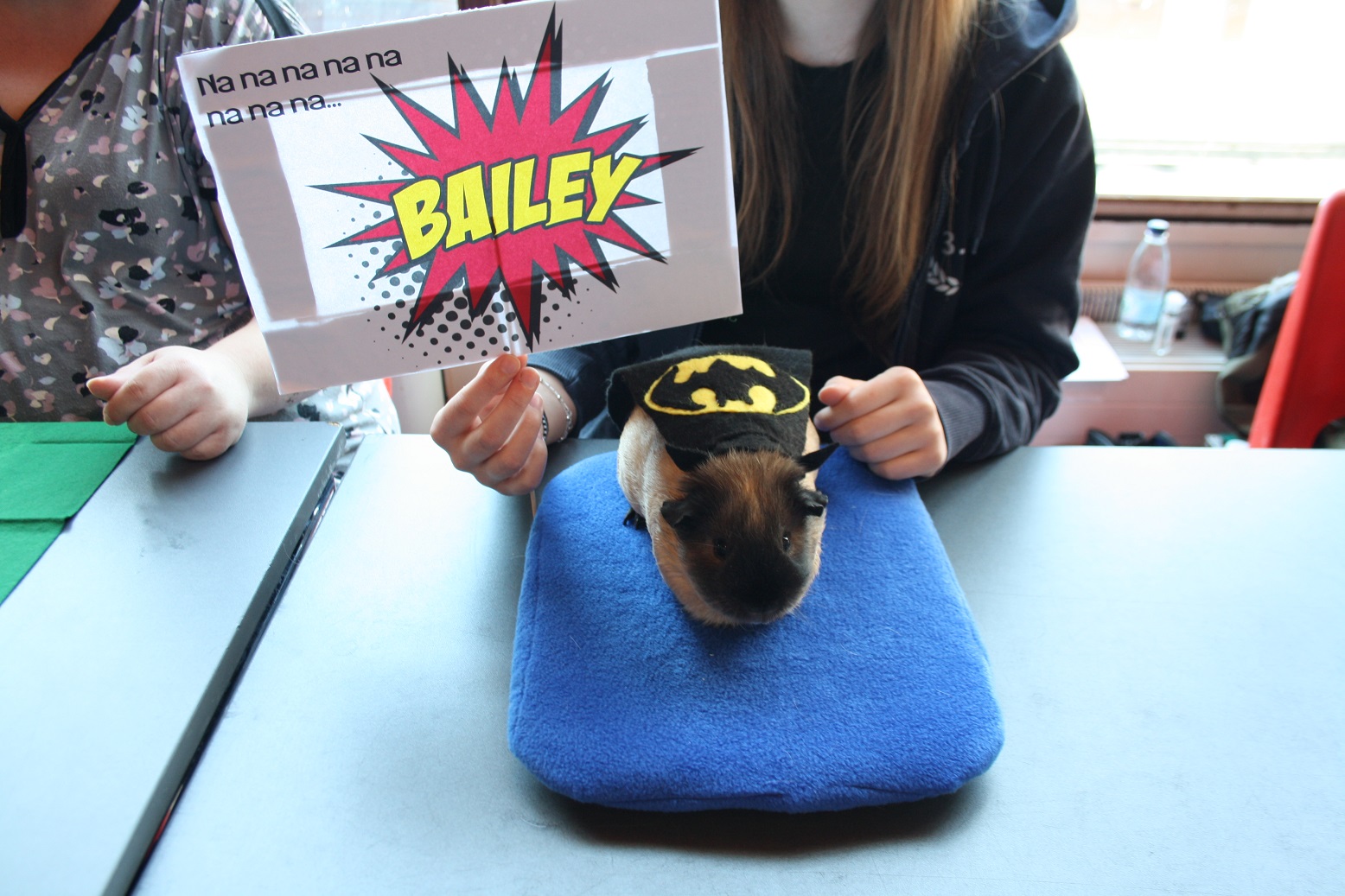

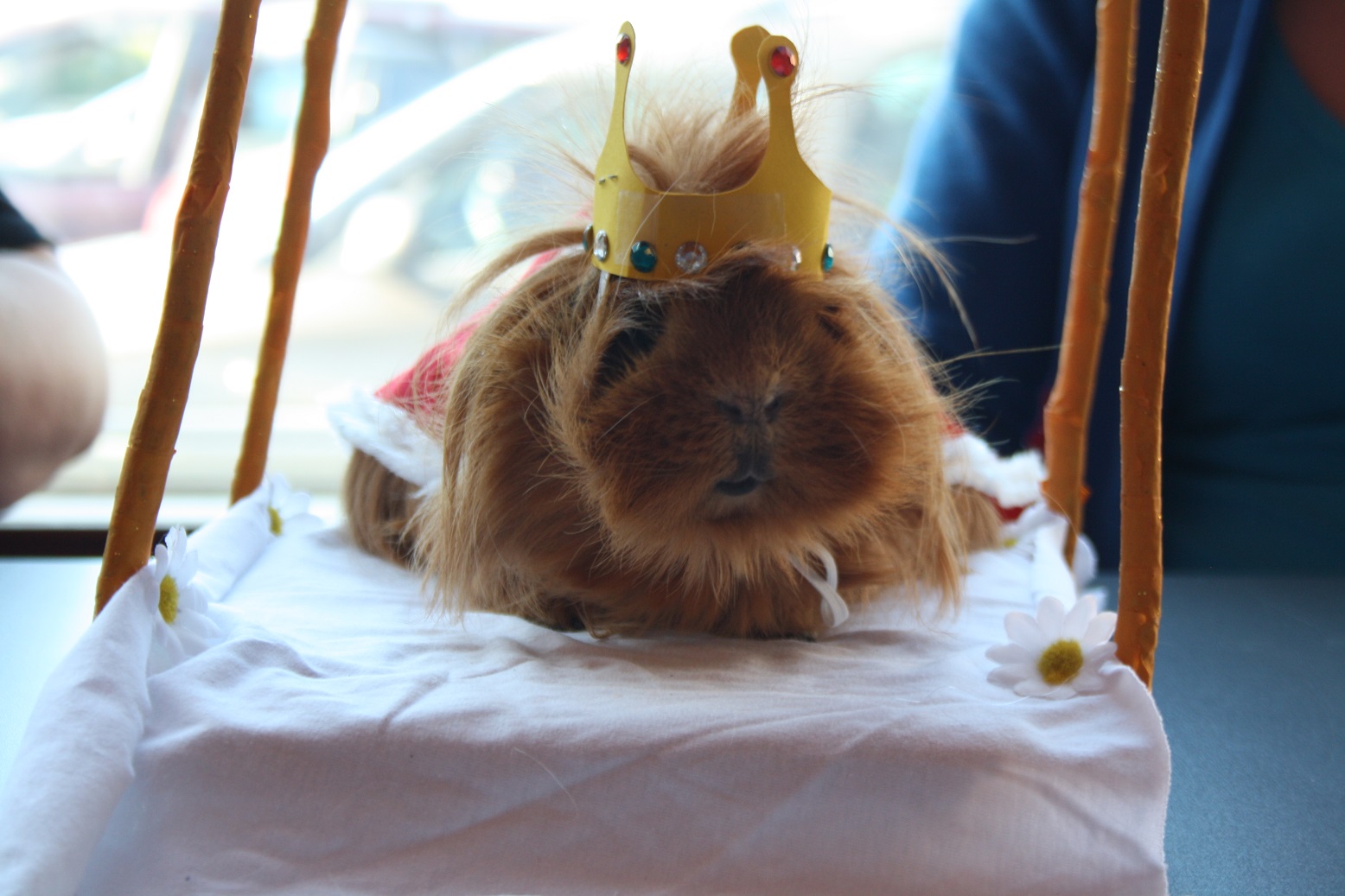
WINNER OF THE CUCUMBER-EATING COMPETITION
How did you prepare for this competition?
“The animals feel safe with us – this is the theory. They feel so safe when we’re standing down there at the table. So they come to us and because they know we’re there and looking after them, they just dare to sit and eat and relax. Even the little one there who’s 2 months old, he was number 3 in the competition. We were number 1, 2 and 3 – and that happens almost every time. We take the guinea pigs up and feed them every day, they’re real pets! So you could say that we are practicing every day.”
This family (mother and two sons) were number 1, 2 and 3 in the cucumber-eating competition this year. The boys are both 14 years old, so it’s the final year that they’re allowed to compete in the junior class. Next year they have to compete with the pets. How do they feel about this?
“Well we’re already allowed to compete with the pets now – it’s only the adults that can’t compete with the juniors.”
The family has only once returned home from a guinea pig show without the cucumber-eating rosette.
“This was in February. Their favourite guinea pig was ill and they decided that she should be allowed to compete in the cucumber competition one last time, even though they knew she probably wouldn’t win it.”
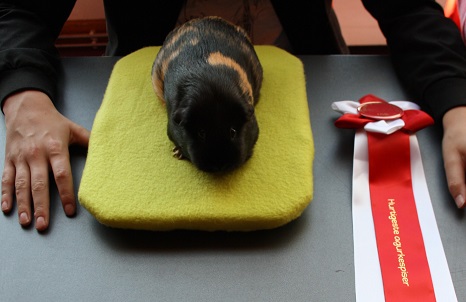
You can learn more about Guinea Pigs by reading the Omlet Guinea Pig Guide here
This entry was posted in Guinea Pigs on June 11th, 2018 by helenkennedy
As we approach warmer days, many of us will now be all too familiar with the dreaded hay fever. Hay fever, also known as allergic rhinitis, is a type of inflammation which occurs when the immune system overreacts to allergens in the air. Typically, it’s triggered by environmental allergens such as pollen, pet hair, dust or mould and peaks in spring and summer. But, did you know that dogs get hay fever too?
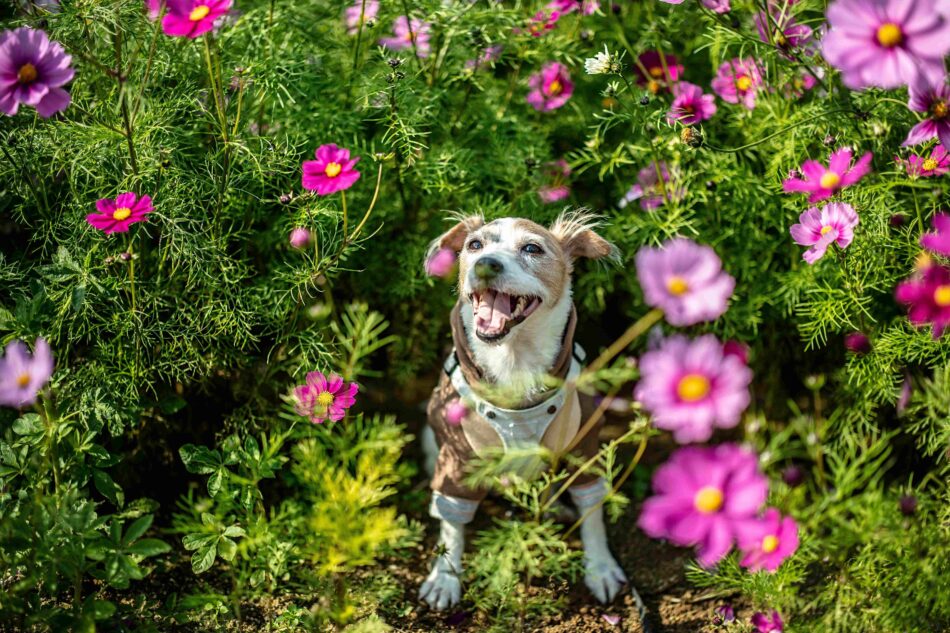
What are the symptoms of dog hay fever?
Sudden sneezing and a runny nose on a summer’s day out with your furry friend can only mean one thing…hay fever has hit. But, since our pets’ immune systems are not the same as ours, dogs present symptoms differently and will most likely become very itchy all over their bodies. The most commonly affected areas of the skin include the armpits, the groin, the base of the dog’s tail, the feet and the sides of the face. You should also watch out for other signs of canine hay fever which include:
- Bald spots
- Rash on the face and paws
- Redness
- Ear infections
- Scabs and lumps in the skin
Which dogs are more likely to get hay fever?
Some dog breeds are particularly prone to hay fever because of their genetic makeup such as their nose shape and coat type. Breeds that are most likely to be affected include but are not limited to, West Highland Terriers, Dalmations, Schnauzers, and Boxers.
When it comes to age and hay fever, there’s no magic number and like humans, dogs can develop this condition at whichever canine life stage. But symptoms often begin when dogs are between 1 to 3 years old.
How to treat dog hay fever
It can sometimes be difficult to identify whether your dog is experiencing hay fever as symptoms can also mimic other pet allergies such as atopic dermatitis. If your dog is showing any signs of discomfort or being unwell and you’re unsure about the cause, be sure to contact your vet. They’ll be able to allergy test them to work out if hay fever is causing the problem and prescribe them suitable medication if required.
There’s no cure for dog hay fever, but there are a few things that can be done to make Fido feel better.
Prescribed medication
After consulting your vet, they may be able to provide your dog with antihistamine medication to help with their symptoms. For the rare cases where a pollen allergy provokes a more extreme reaction, your vet can administer a shot to help alleviate these.
Get that fresh-sheets feeling
You should wash your dog’s bed regularly and hoover regularly to remove the pollen your dog picked up during walks. Omlet’s Topology Dog Bed has a range of removable toppers that can simply be zipped on and off to be placed in the washing machine for that fresh-sheets feeling. Plus, it’ll improve your home’s hygiene too, with raised feet to minimize the buildup of dust, debris and mildew from underneath the bed.
Make indoors fun
The rising temperatures over summer can mean having to find other ways to keep your dog mentally stimulated indoors where necessary, but doing so can also help reduce hay fever symptoms, especially when pollen counts are high. Ensure your pup has plenty of dog toys and you can even try out a few new fun tricks to keep them entertained and their mind engaged.
Choose walking routes carefully
When you do head out, make sure that you the areas where you walk your dog wisely. This means keeping them away from longer grass and vegetation. Avoiding these areas means less chance of coming into contact with what could be setting off your dog’s allergies.
Use a damp towel
You might already wipe your dog’s paws clean after a walk but it’s a good idea to also wipe your dog’s coat over with a damp towel immediately after you come home to remove any pollen. You should start with the face and end with your dog’s legs and paws.
Try oatmeal baths
A nice soothing oatmeal bath will help to soothe your dog’s itchy skin and remove any pollen that remains on them. Simply pour one cup of crushed whole oatmeal into a tub and stir with warm water. If you’re unsure about a bath full of oatmeal, you can also use oatmeal shampoo for dogs or alternative shampoos designed to reduce dog skin irritation.
Omlet and your dog
At Omlet, we understand that keeping your dog in tip-top condition should be done all year round, not just when allergies strike. That’s why we designed a wide range of innovative dog beds, dog crates, dog blankets and more, to give your dogs the products they need to thrive.
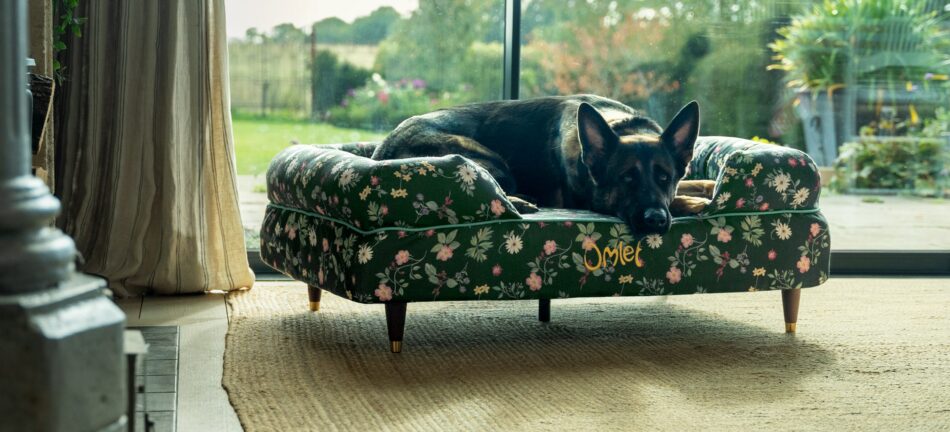

This entry was posted in Dogs on June 11th, 2018 by helenkennedy
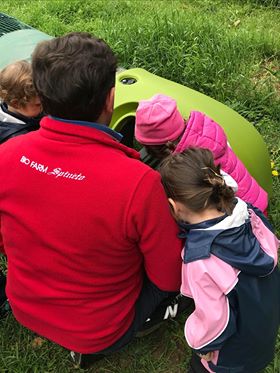
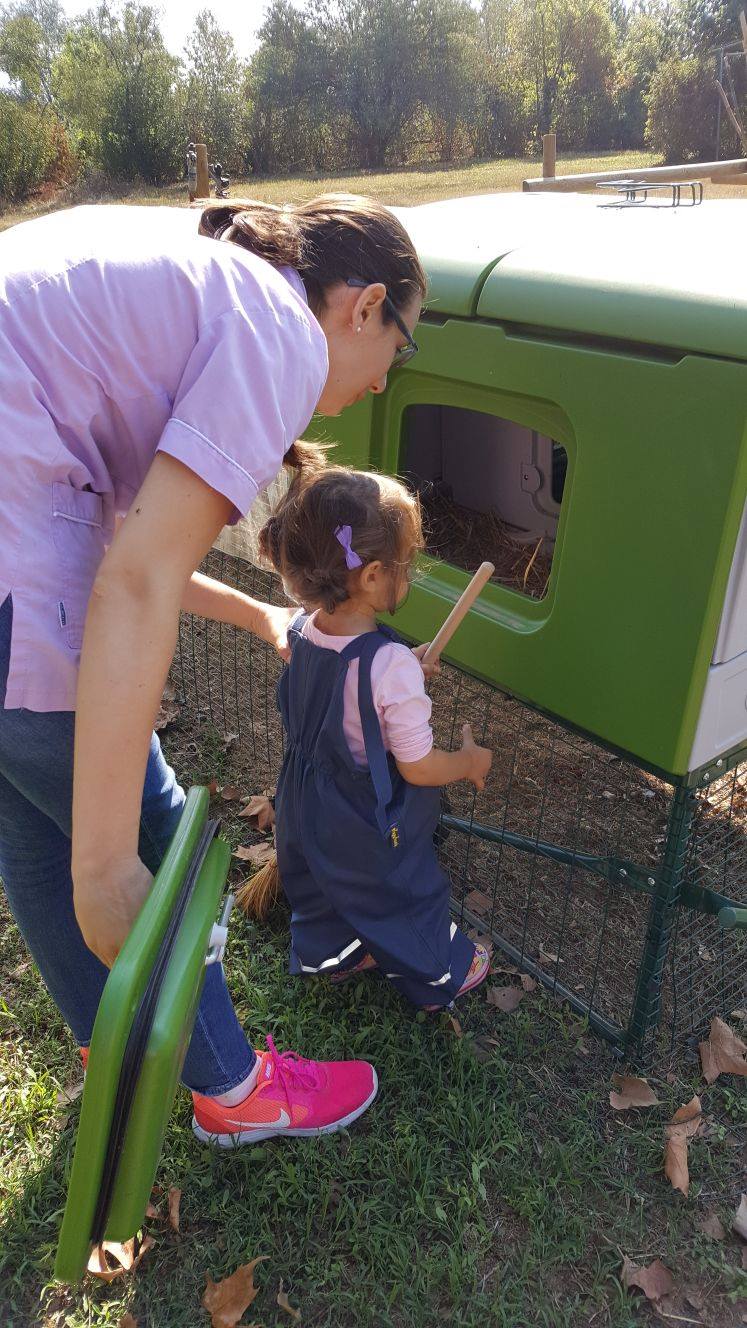

A school in Italy, ‘Agrinido e Agriasilo Montessoriano Al Nido dell’Aquila’ has recently bought an Eglu Cube and Eglu Classic Chicken Coop for their educational programme on nature and pet caring.
We spoke with Mr Colombo’s about their new exciting project.
“Our farm with vegetable garden area produces fruit and vegetable and has recently added a nursery and a kindergarten following the Montessori method.
According to the Montessori method, the outside space needs to be prepared and organised as well as the classrooms inside the building. Therefore, we created and equipped an area
of our farm for the purpose of having children grow and care for the vegetables and also the pets (chickens and tortoises).
We wanted our little students to care for their own chickens for different reasons: firstly, to teach them how to care for another living being, and secondly, for the daily exiting reward of
getting delicious fresh eggs. Moreover, chicken- and pet-keeping has been a valuable starting point to teach numbers to the children, not to mention that the eggs were perfect to
paint and use as Easter decorations!
In order to assure that our students had the best and most educational experience, we needed something practical, clean and safe. In addition, it has to fit in the 55sqm we dedicated to the project. We decided to choose an Eglu Chicken Coop as, compared to regular wooden coops, plastic was easy to clean, highly hygienic, wouldn’t rot and would last for a very long time.
We decided to opt for Omlet’s Eglu Cube, as we valued the possibility to move the coop regularly. We move our Eglu every Saturday, in order to allow our chickens to enjoy new fresh grass every week. We were pleased to discover that one person can easily move such a big coop alone thanks to the wheels.
The size of the coop was also essential: it has to be accessible by small children. The Eglu Cube features a lateral door for easy access to the nest and eggs which is at the perfect height even for 2-year-old children. Thanks to this, our students can easily collect eggs in complete autonomy.
After a year, we wanted to expand the program and we bought another coop, the Eglu Classic, which we use to keep chicks. Keeping chicks helps children learning about time flowing and the phases of life from the egg incubation, to hatching and growing, and the patience necessary to wait for all these changes to happen.”

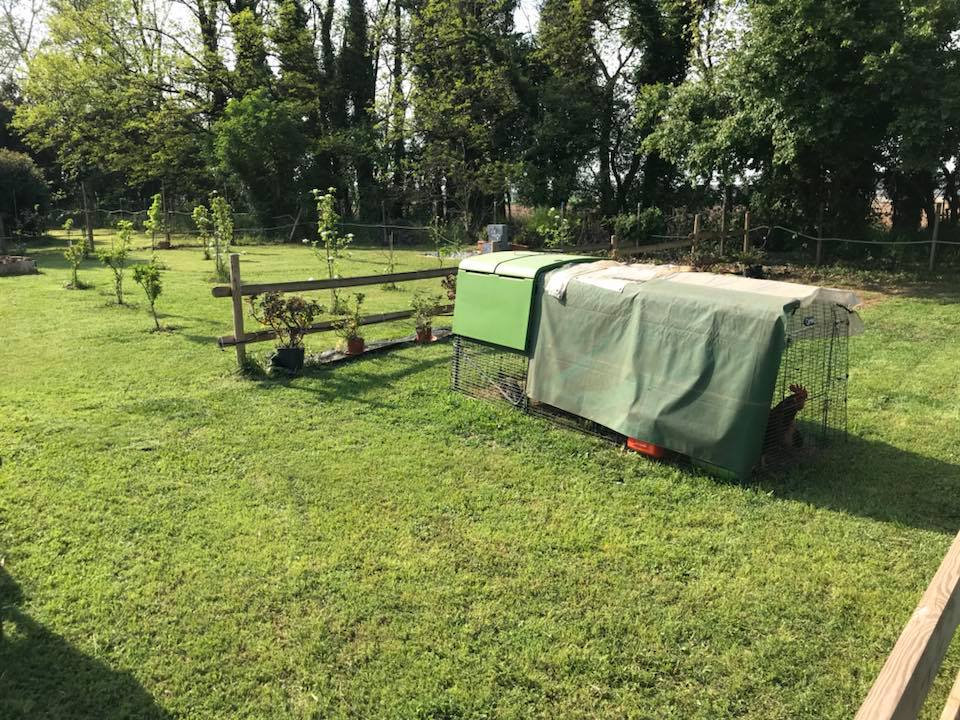
The Eglu Cube Chicken Coop is the ideal way to keep up to 10 chickens in a town or country garden – find out more here
The Eglu Classic Chicken Coop is an easy to move starter chicken house suitable for 2-4 birds – find out more here
If you are a school looking to purchase an Eglu Chicken Coop please email hello@omlet.co.uk or call 01295 500900
This entry was posted in Chickens on June 11th, 2018 by helenkennedy
















